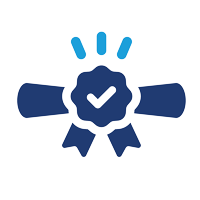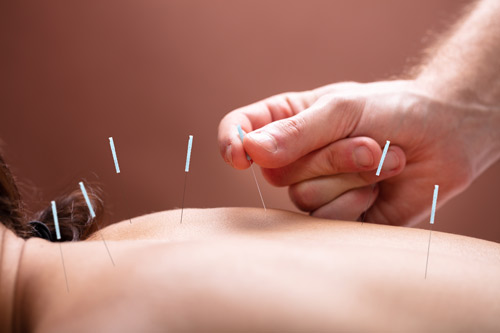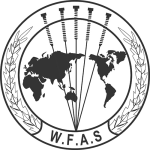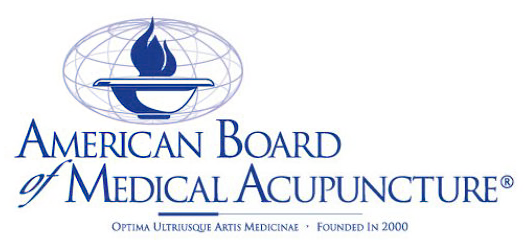American Board of Medical Acupuncture
The American Board of Medical Acupuncture (ABMA) was formally established on April 26, 2000. The ABMA has been created as an independent entity within the corporate structure of the American Academy of Medical Acupuncture. The ABMA has a separate, independent Board of Trustees with full responsibility for the direction and operation of the ABMA.
Board Certification Process
Find requirements and procedures to pursue certification to become Diplomate of American Board of Medical Acupuncture.

Training Programs
ABMA has reviewed and approved several training programs that meet WFAS and ABMA education requirements.

Certification
Find general, education, and training requirements along with application procedures to apply for certification in medical acupuncture.

Recertification Procedures
Current ABMA Diplomate nearing 10 year expiration? Find details on the process for recertification.

Definition of Medical Acupuncture
Medical acupuncture is a medical discipline having a central core of knowledge embracing the integration of acupuncture from various traditions into contemporary biomedical practice. A Physician Acupuncturist is one who has acquired specialized knowledge and experience related to the integration of acupuncture within a biomedicine practice.
The essential purposes of the ABMA are:
- To establish requirements for the qualifications of applicants who request a certificate of their training and experience in the field of medical acupuncture in its broadest sense.
- To conduct examinations of approved candidates who seek certification by the board.
- To issue certificates to those physicians who meet the board’s requirements and pass the board’s examination.
- To promote the advancement and betterment of the specialty of medical acupuncture.
- To assist in improving the quality of post-graduate and continuing education in the specialized medical practice embraced by the field of medical acupuncture.
- To do and engage in any and all lawful activities that may be incidental or reasonably related to any of the forgoing purposes.
The intent of the certification process is to provide assurance to the public that a certified medical specialist has successfully completed an approved educational program and an evaluation, including an examination process, designed to assess the knowledge, experience and skills requisite to the provision of high quality patient care in that specialty. Diplomates of the American Board of Medical Acupuncture possess particular qualifications in this specialty.
Standards of certification are distinct from those of State licensure. Possession of a Board certificate does not indicate total qualification for practice privileges, nor does it imply exclusion of other physicians not so certified. The Board does not purport in any way to interfere with or limit the professional activities of any licensed physician or any of his/ her regular or legitimate activities.
The Board considers Certification to be based upon a process, which includes the education phase, experience phase and examination phase. It holds that the education and training phase are of the utmost importance in preparing the physician in the theory and techniques of medical acupuncture. The most appropriate training is an organized course of study, based on a systematic curriculum that emphasizes an integrated medical acupuncture curriculum from multiple paradigms and acupuncture traditions.
Education and Training in Medical Acupuncture
 The World Health Organization and the World Federation of Acupuncture and Moxibustion Societies (WFAS) have promulgated acupuncture training and education standards for Western trained physicians. Those standards were first adopted in Beijing, China in 1987 and reaffirmed at the WFAS conference in Milan, Italy in 1996. These are considered to reflect the minimum level of training necessary for a Western trained physician to enter the practice of medical acupuncture. The WHO standards for physician acupuncture practitioners are as follows:
The World Health Organization and the World Federation of Acupuncture and Moxibustion Societies (WFAS) have promulgated acupuncture training and education standards for Western trained physicians. Those standards were first adopted in Beijing, China in 1987 and reaffirmed at the WFAS conference in Milan, Italy in 1996. These are considered to reflect the minimum level of training necessary for a Western trained physician to enter the practice of medical acupuncture. The WHO standards for physician acupuncture practitioners are as follows:
“4.2.1 For licensed graduates of modern Western medical colleges, who already have had education and training in anatomy, physiology, neurology, and all the other basic and clinical sciences involved in medical diagnosis and treatment, training in acupuncture can be accomplished following a different training pathway for them to master acupuncture as a special medical modality.
The theoretical part and objectives of this acupuncture training are parallel to those described in the complete training section, and the acupuncture core syllabus will be the same. (The entire WHO/WFAS document is available from the ABMA.) The whole course should be devoted to acquiring the knowledge and skill in acupuncture as well as the related basic theory for at least 200 hours of formal training. By the end of the course the participants should be able to integrate acupuncture into their medical practices. The proficiency of training and practice should be evaluated through an official examination by health authorities to ensure safety, competence, and efficacy.”
The American Board of Medical Acupuncture has established standards of training and education that exceed those established by WFAS as the entry-level standards. The ABMA will not accept into the process of Certification anyone who has not met the standards for training, education and experience as set forth by the ABMA.
The purpose of postgraduate education in medical acupuncture is to ensure safety, competence, and efficacy in the practice of medical acupuncture, and to understand its proper integration into a biomedical practice. This education can best be achieved through an organized course of study, with a systematic curriculum as described above. Of that program, at least 100 hours are to be clinical in nature, 100 hours didactic.
The educational requirements set forth by the Board are to be considered the minimum requirements of the Board and should not be interpreted to be restrictive in nature. The Board encourages continuing education and training in advanced level courses and in various microsystems. The Board has adopted a policy requirement that all physicians who have achieved certification from the Board must document minimum levels of continuing education in acupuncture in order to achieve re-certification.
